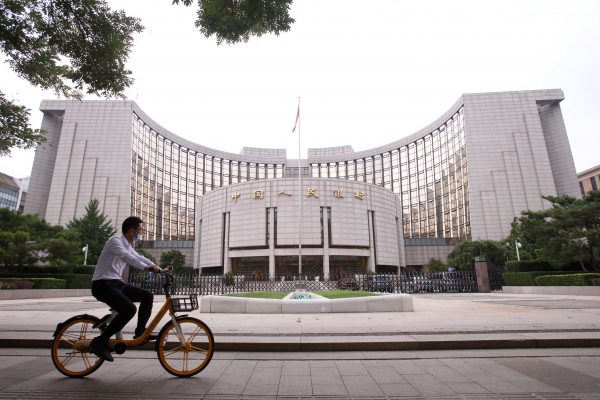The International Monetary Fund (IMF) came to the rescue, but its assistance was too little and too late. Its conditions were harsh, with the Fund demanding recipient countries accept sharp increases in interest rates, capital account liberalisation and the shuttering of troubled financial institutions.
The conditionality imposed by the IMF worsened the Asian Financial Crisis. Disappointed by the IMF’s insensitivity, Japan proposed the creation of an Asian Monetary Fund (AMF) in September 1997 — arguing it would respond faster and impose conditions more in line with the ‘Asian way’.
But the AMF faced objections from Washington and the IMF on the grounds that it would duplicate existing institutions and create moral hazard problems. The response from East Asian countries was lukewarm due to the lack of trust between East Asian countries, especially Japan and China.
In May 2000, ASEAN countries plus China, Japan, and South Korea (the ASEAN+3) finally signed an agreement to create a network of bilateral swap arrangements designed to address a regional liquidity shortage called the Chiang Mai Initiative (CMI). The signing of the CMI marked the beginning of Asian financial cooperation.
In December 2009, ASEAN+3 members agreed to expand the Chiang Mai Initiative into a multilateral reserve pooling scheme, the Chiang Mai Initiative Multilateralisation (CMIM), whose size grew from US$120 billion to US$240 billion. The CMIM became a regional pool of foreign exchange reserves funded by the contributions of member countries.
Under the CMIM, the link to the IMF-supported program was maintained but reduced. Although it was still not a regional financial institution, the signing of the CMIM and the creation of the ASEAN+3 Macroeconomic Research Office (AMRO) to support and supervise the implementation of CMIM was one step closer to a regional financial architecture such as the Asian Monetary Fund.
The second advance in regional financial cooperation was the Asian Bond Markets Initiative (ABMI) launched in December 2002, a regional arrangement for facilitating the issuance of bonds denominated in local currencies. Under the ABMI, Thai baht bonds could be issued by the Japan Bank for International Cooperation to finance the business operations of Japanese firms in Thailand, reducing the need for firms operating in Thailand to issue dollar-denominated bonds to finance their operations.
The ABMI was designed to reduce the region’s overreliance on money from outside the region, especially international bank loans, making East Asian countries more resilient to the sudden reversal of outside capital flows. The emerging East Asia local currency bond market reached a total value of US$23.5 trillion in April 2022. China’s local currency bond market is the largest, accounting for the largest bulk of the region’s total.
The third and most ambitious attempt at regional financial cooperation was the Asian Development Bank’s 2005 proposal to create an Asian common currency — the Asian Currency Unit (ACU).
The ACU was a currency basket consisting of ASEAN+3 currencies to which currencies in the region would be pegged. It aimed to help central banks stabilise their currencies to avoid a competitive devaluation while enabling them to float collectively against the US dollar so that the region’s current account imbalances could adjust in a timely fashion. The proposal was welcomed as a first step in the creation of the regional common currency.
After some solid progress, efforts toward Asian financial cooperation seem to have lost momentum. Multiple factors have contributed to this.
First, most ASEAN+3 countries have run current account surpluses since the Asian Financial Crisis, accumulating a huge amount of foreign exchange reserves. With foreign reserves rising from US$542 billion in 1997 to US$3.7 trillion in 2008, liquidity support is less necessary. Countries prefer to accumulate their own foreign exchange reserves rather than inactivate the CMIM, which was inconvenient to inactivate because of its link with IMF-supported programs and many self-imposed conditions.
Second, although the Asian Bond Market Initiative has achieved significant progress over the last 10 years, the increase in outstanding local currency bonds in the region was mainly driven by country-specific ambitions to achieve domestic financial development rather than regional financial cooperation. As a result, the cross-border issuance of bonds denominated in local currencies is very limited. The development of the Asian Bond Market Initiative has also been hampered by a lack of progress in the standardisation of regulations, infrastructure for a securities settlement system and, among other things, market liquidity. It is doubtful that East Asian countries will be happy to incur a large expense to improve this infrastructure.
Third, the ACU has achieved no real traction in public policy. Most East Asian countries have adopted managed floats but are unwilling to peg their respective currencies to a basket of regional currencies. While it is hard to say whether the ASEAN+3 bloc would have constituted an optimum currency area, the key obstacle to the ACU’s creation was political rather than economic. The 2012 European sovereign debt crisis dealt a blow to those who advocated for a common Asian currency.
Since the 1997–1998 Asian Financial Crisis, the regional and global economic reality has changed such that regional financial cooperation is no longer high on the agenda. Faced with a new geopolitical reality, the old economic case for regional financial cooperation has ceased to exist. But with close geographic proximity and economic connectivity, East Asian countries must look to the long term and try harder to promote regional financial cooperation.
Yu Yongding is Senior Fellow at the Chinese Academy of Social Sciences and former member of the Monetary Policy Committee of the People’s Bank of China.

